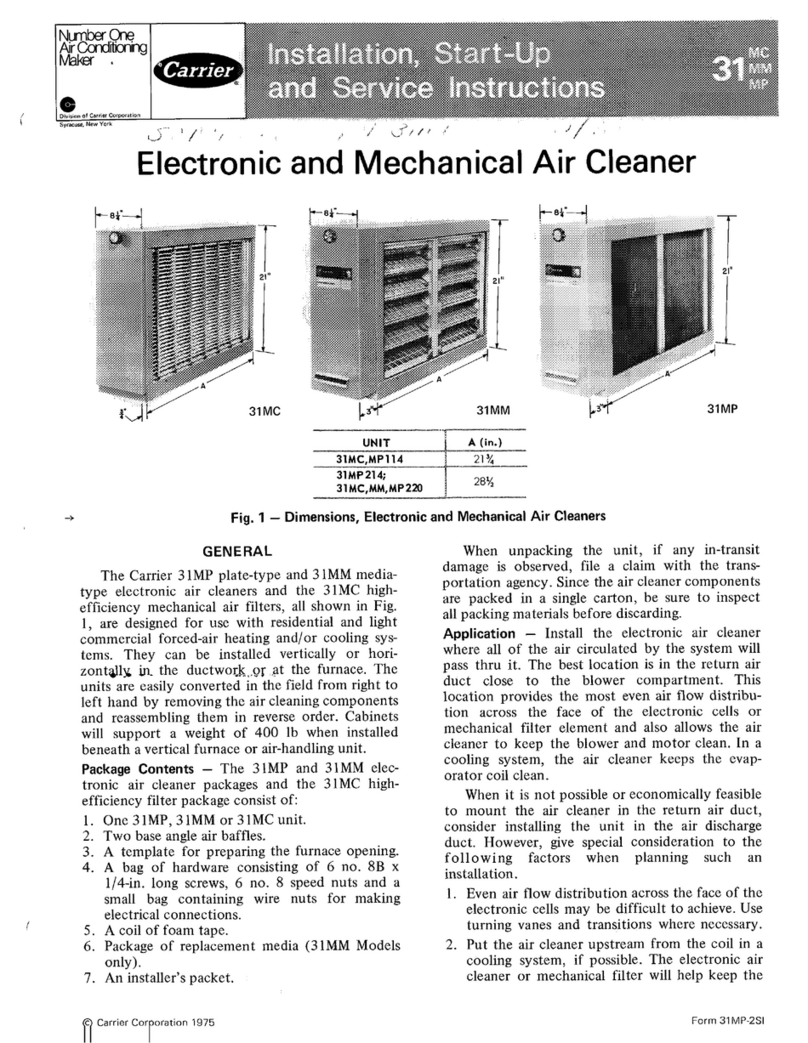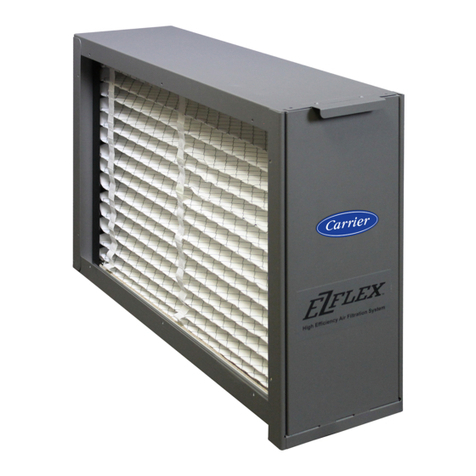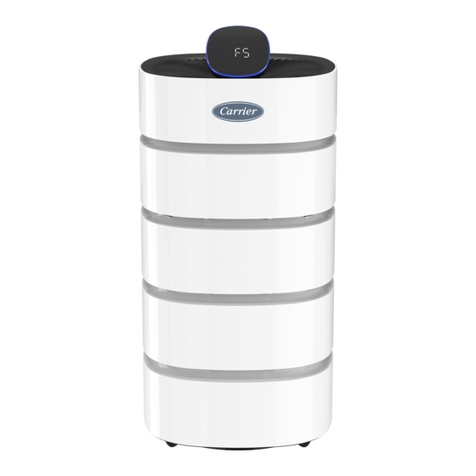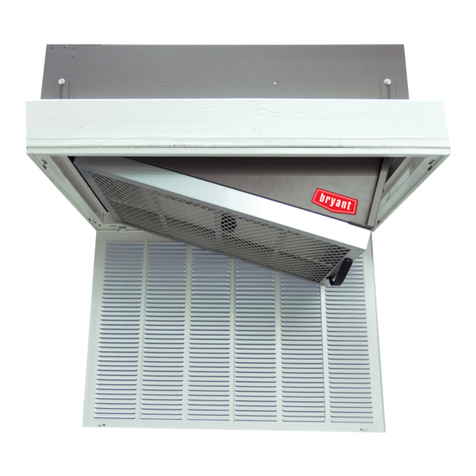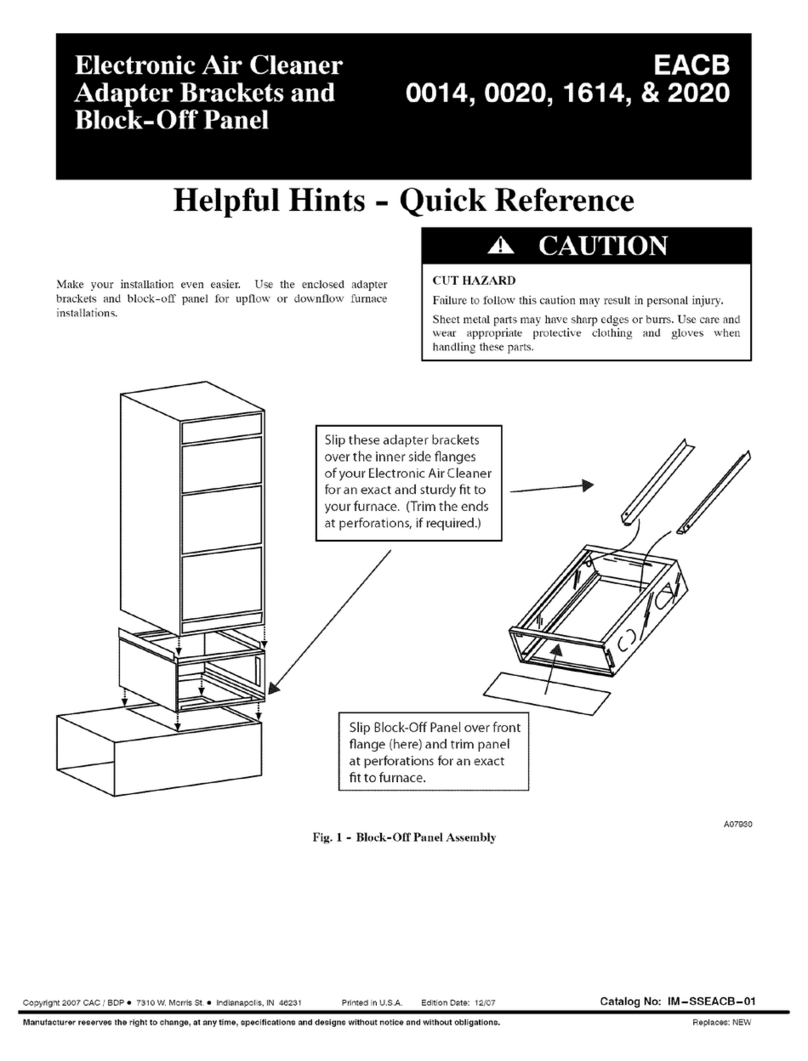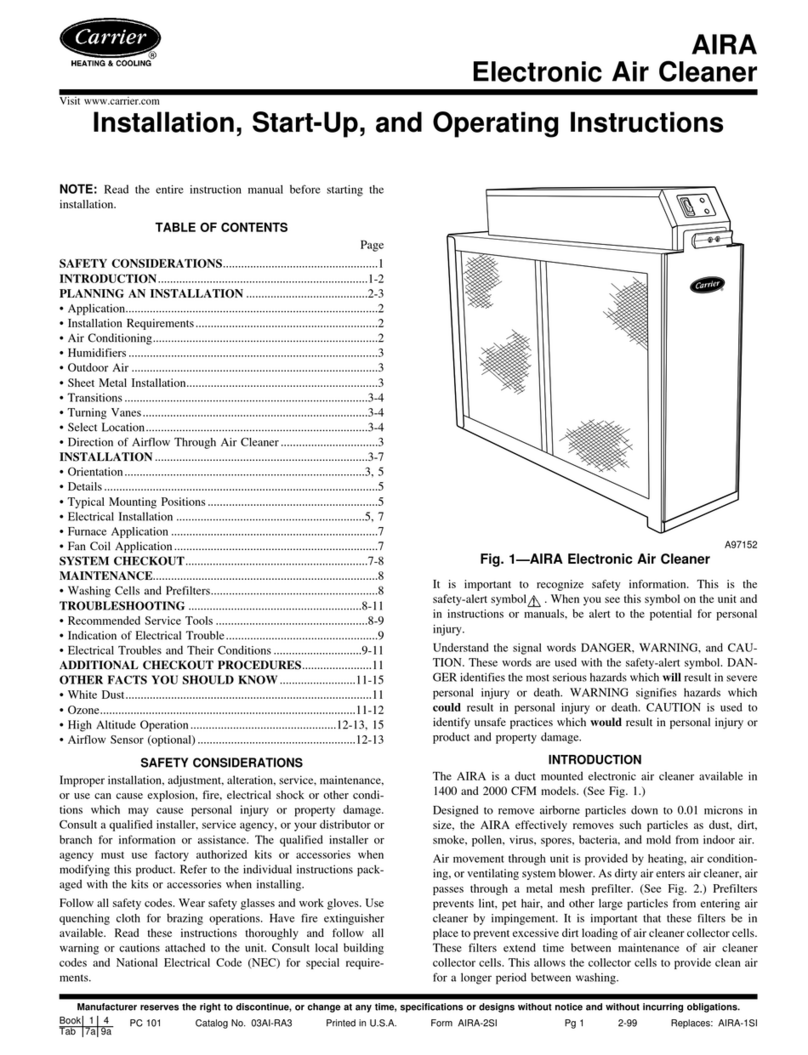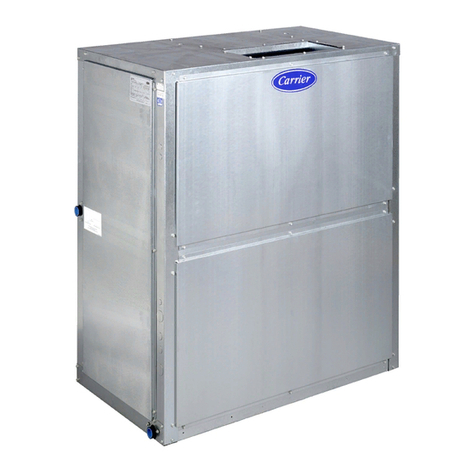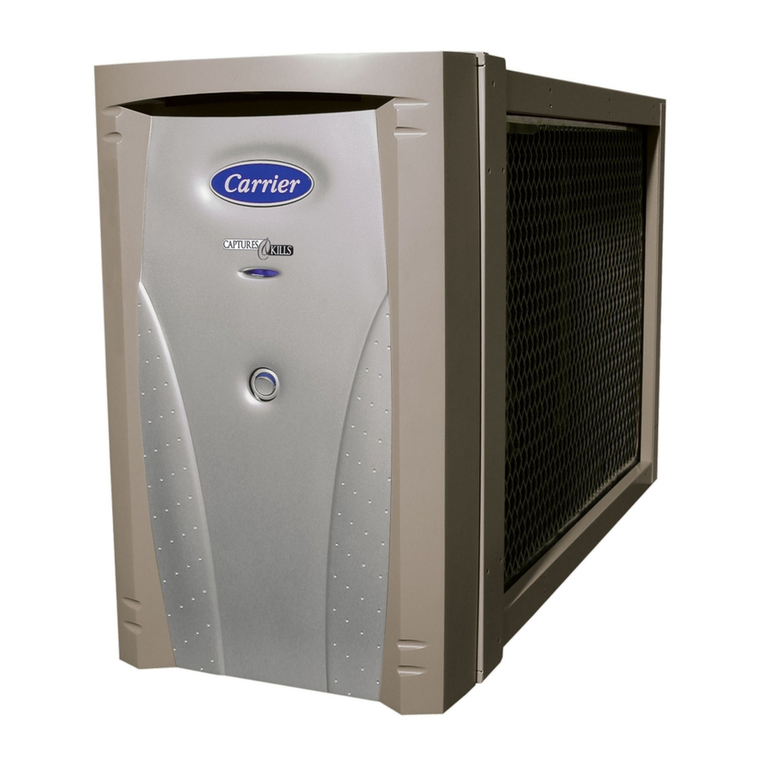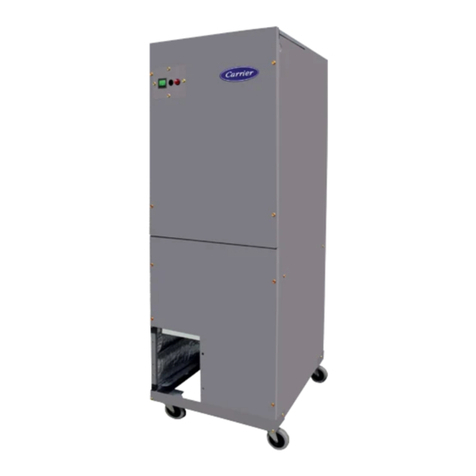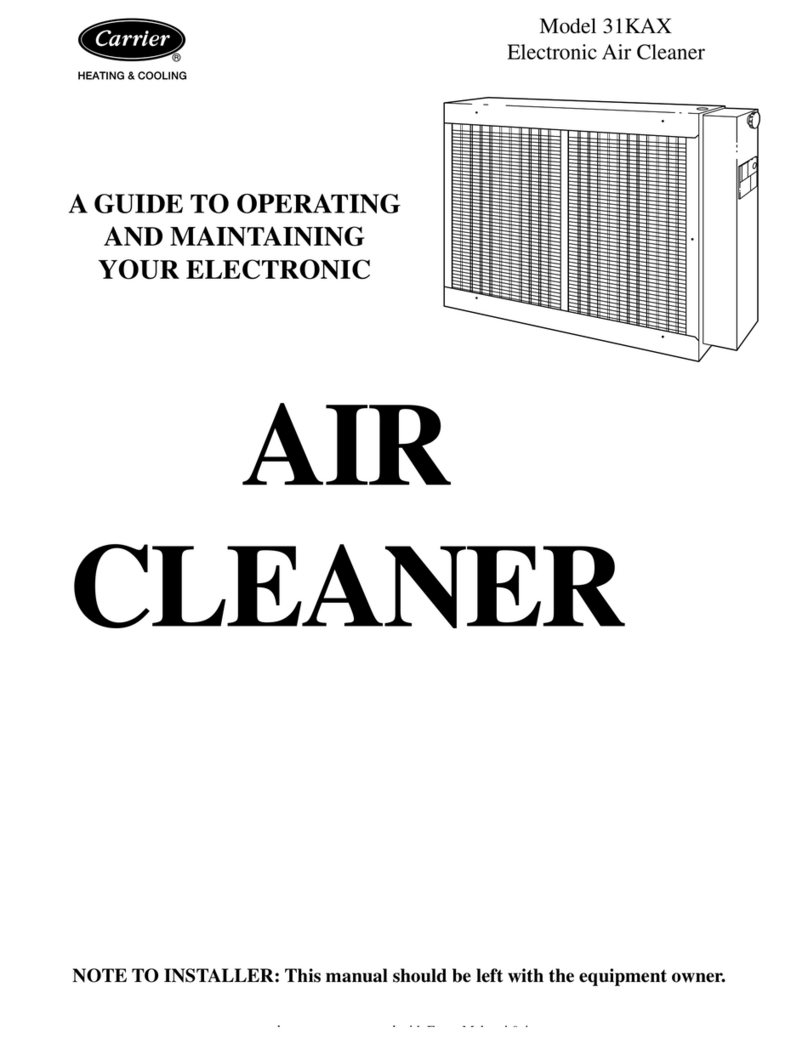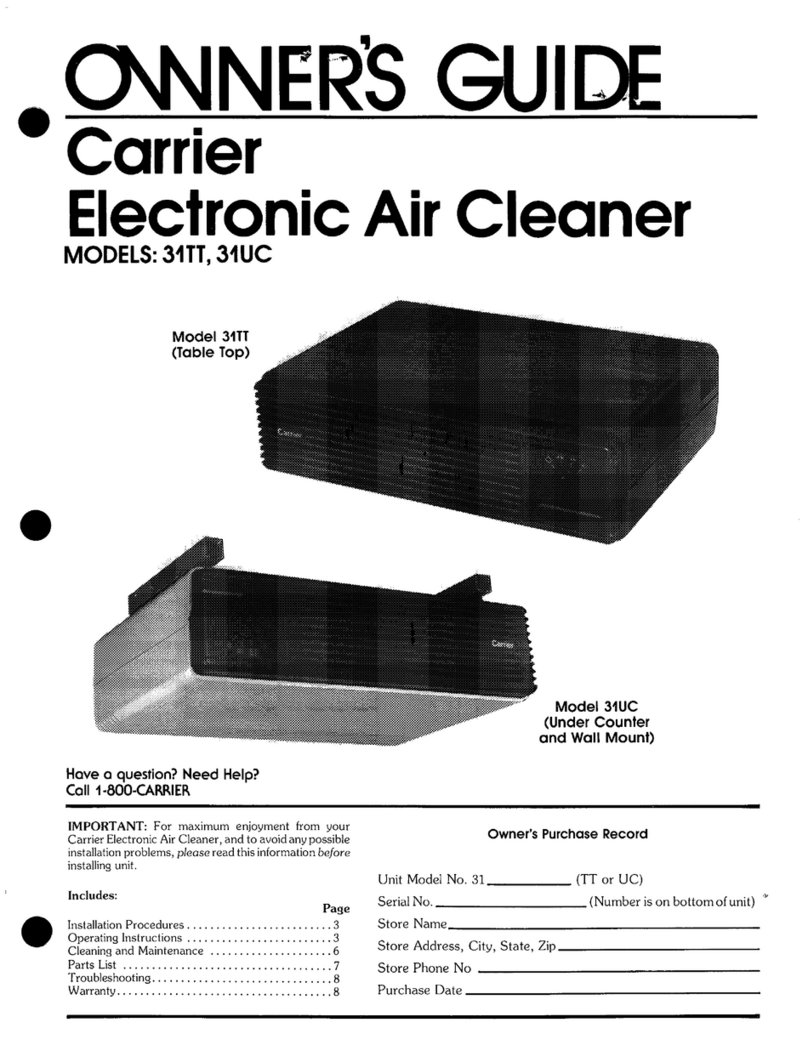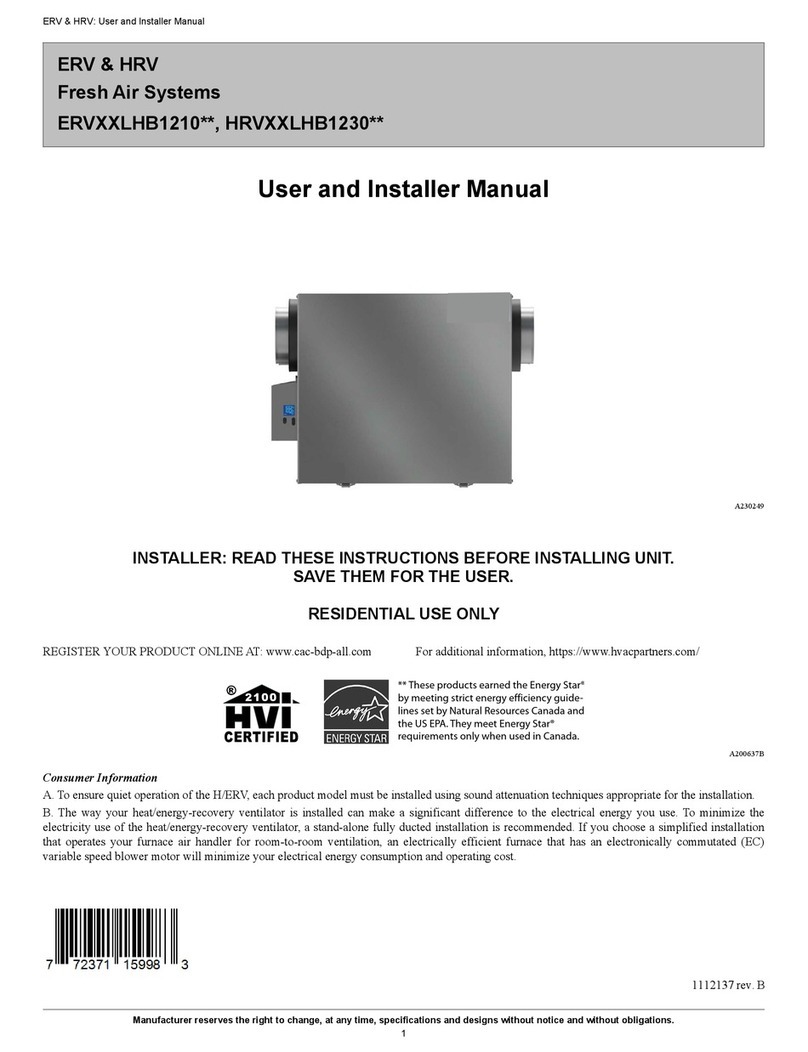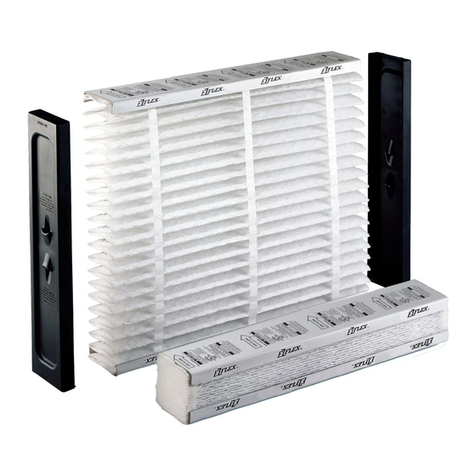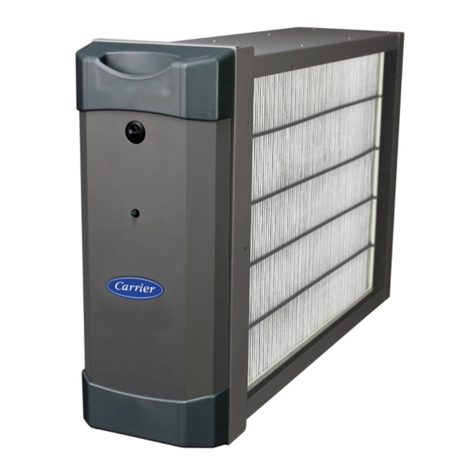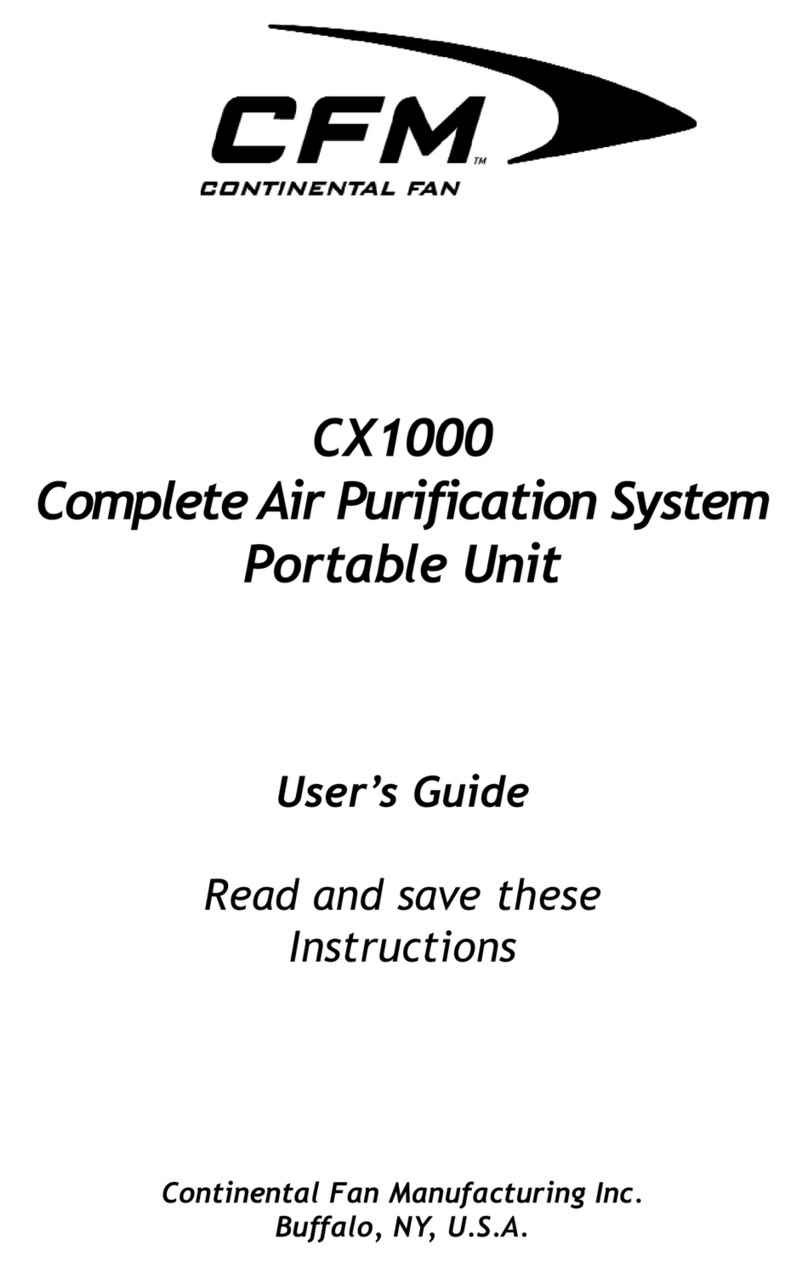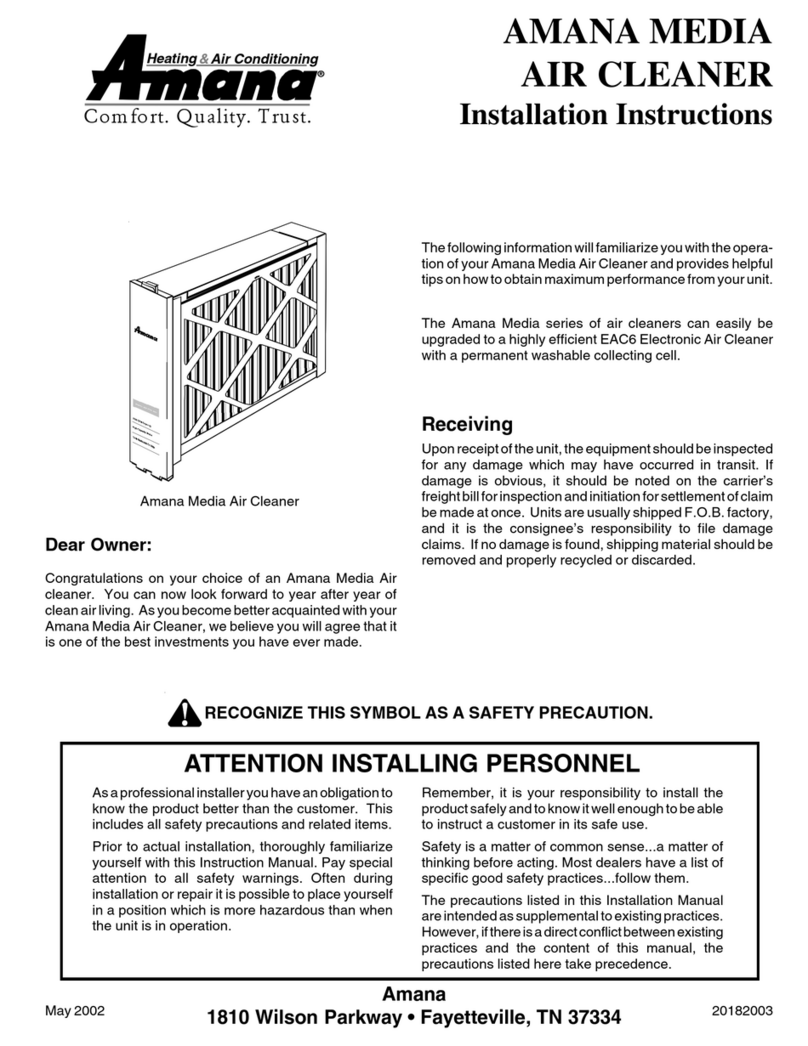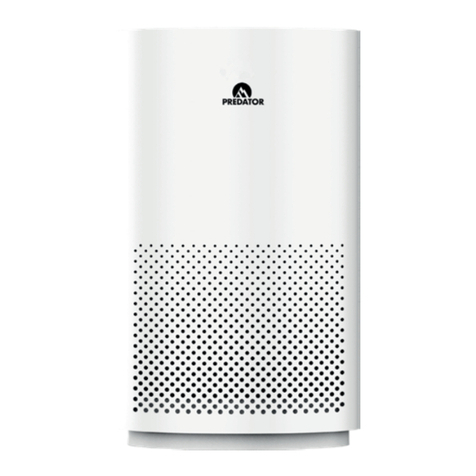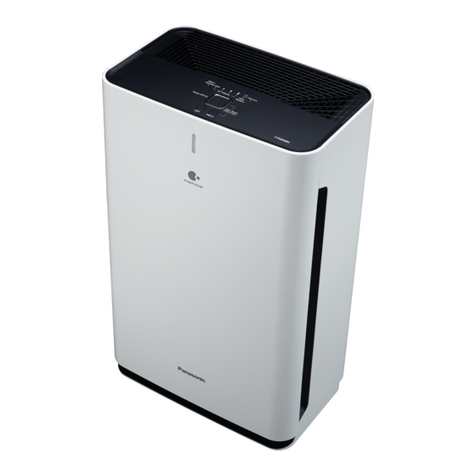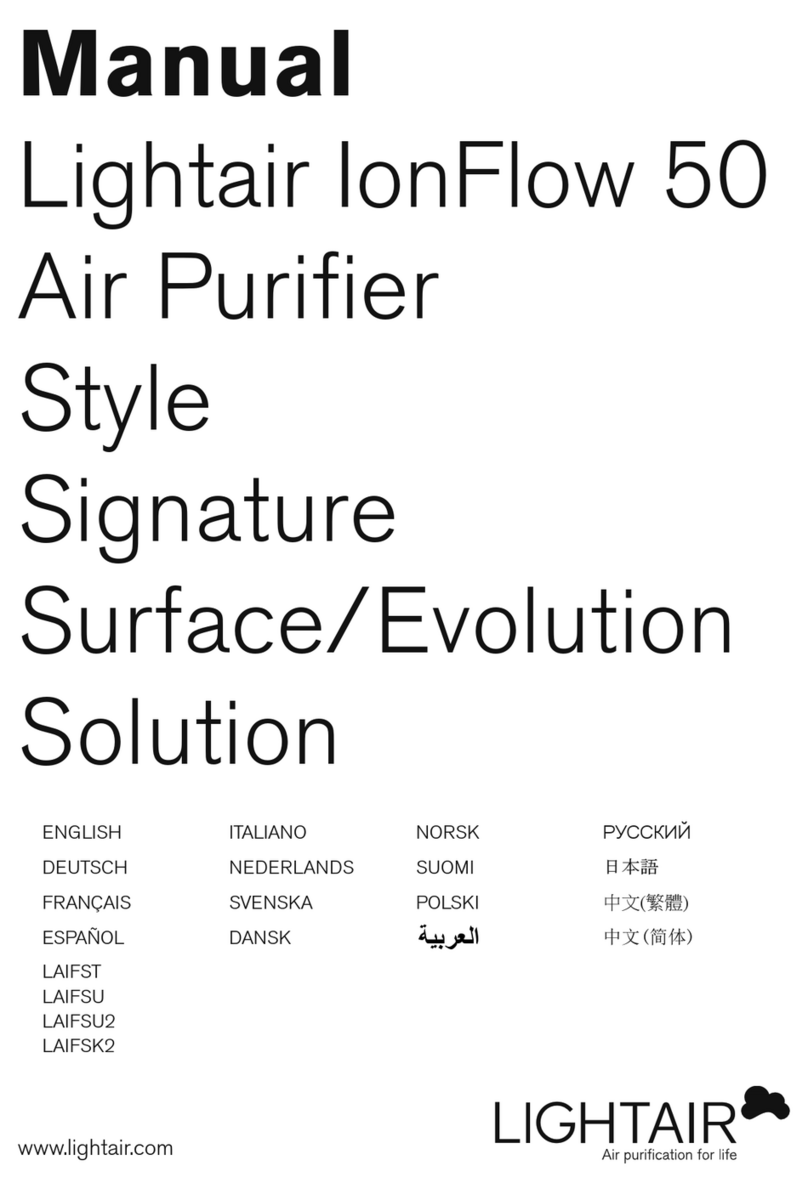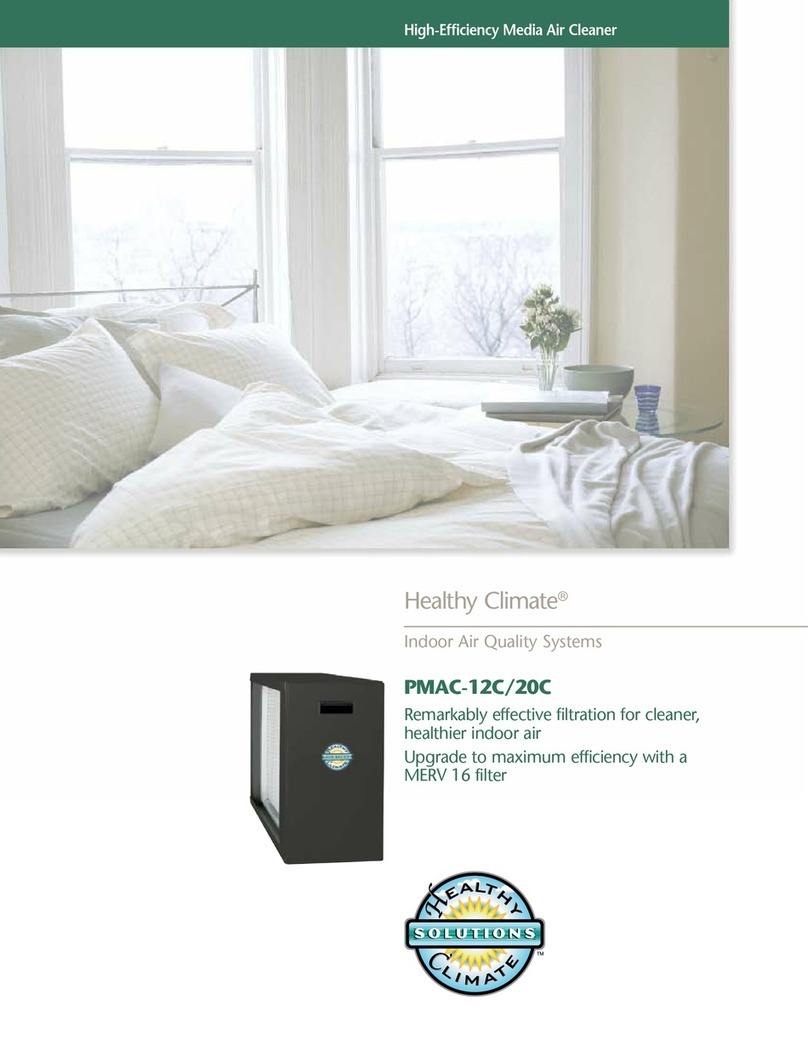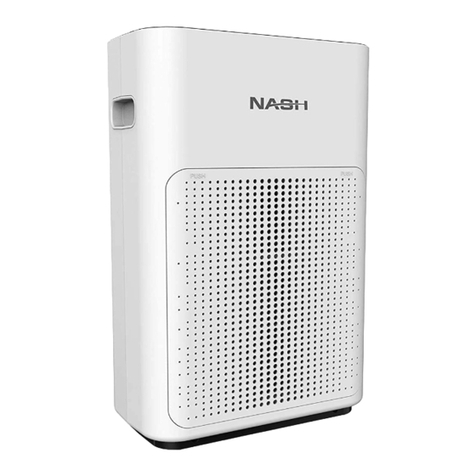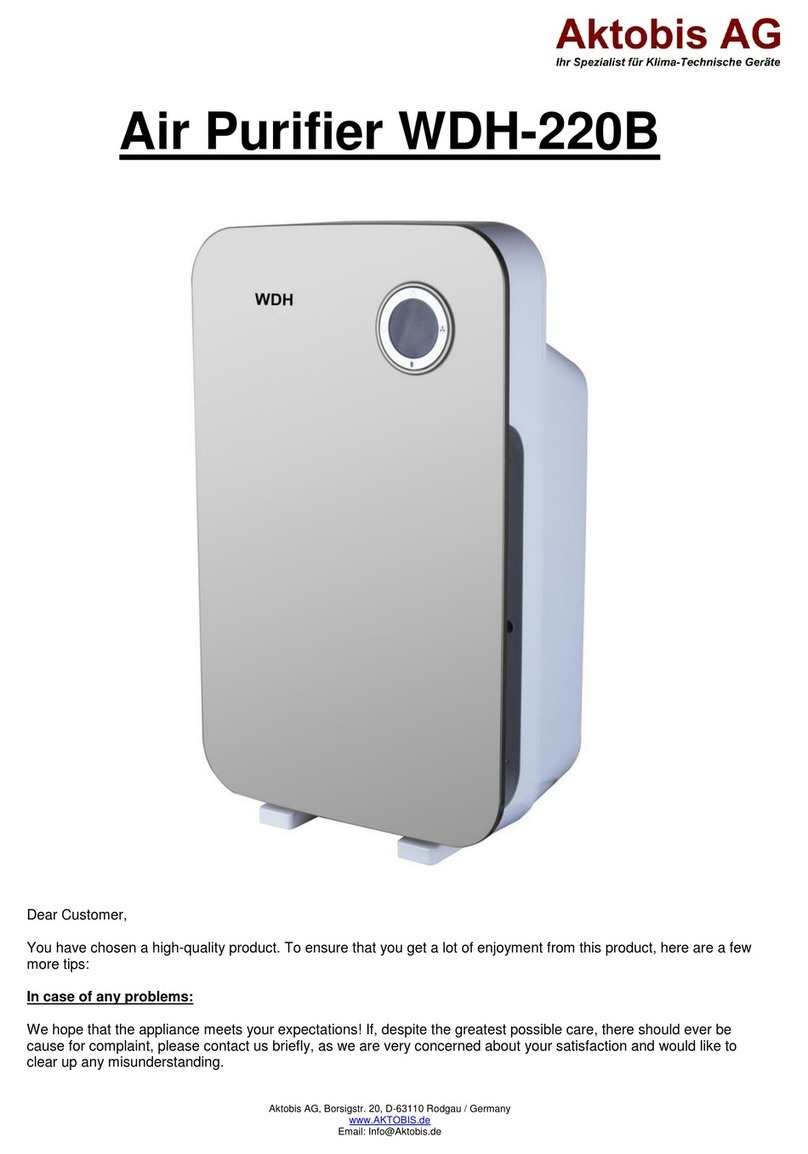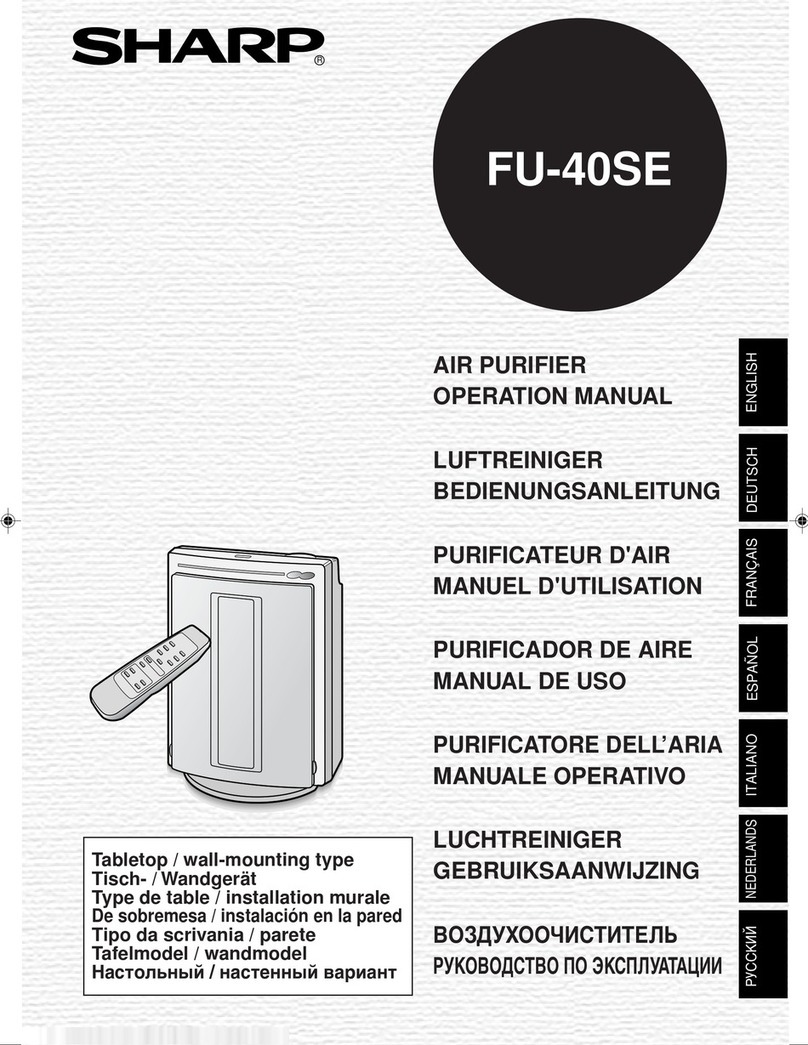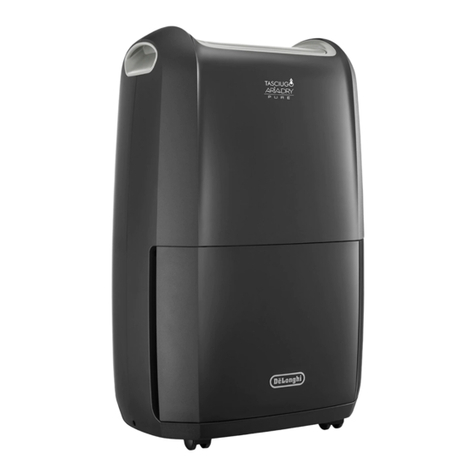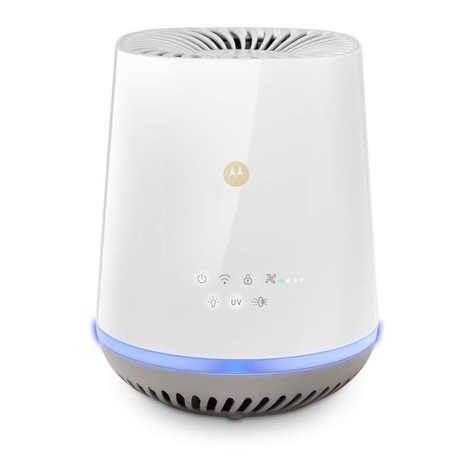FACTS YOU SHOULD KNOWABOUTYOUR NEW
ELECTRONIC AiR CLEANER
Dusting and "White Dust"
Your new Electronic Air Cleaner will efficiently clean and filter your household
air. Unfortunately, it will not eliminate the need for regular dusting of your
furniture and belongings. Due to the design of all duct-mounted air cleaners,
they can only clean the air that reaches the air cleaner. Therefore, if the
particulates are not being carried to the air cleaner in the air stream, the air
cleaner cannot remove them from your home.
Occasionally a "white dust" may be noticed in bedrooms or newly furnished
rooms. This is mainly composed of lint which, because it is heavier than other
particulates, settles before it reaches your unit.. This "white dust" is not mixed
with airborne dirt particles, therefore, it is clean and has no staining or soiling
properties. However, running the furnace blower continuously, day and night,
will help reduce this from occurring.
Ozone
Under normal operating conditions all Electronic Air Cleaners produce
minute quantities of ozone as an incidental by-product. In fact, all electronic
products, such as televisions, cordless phones and refrigerators, produce
some amount of ozone. The average homeowner can detect the smell of
ozone concentrations as low as 25 to 100 ppb (parts per billion). The design of
this unit has been tested and ozone production is approximately half of the
published permissible limits established by the Environmental Protection
Agency. These limits recommend that the concentration of indoor ozone not
exceed 50 ppb. Ozone is not harmful in these concentrations. In fact, the
ozone level in major cities can sometimes reach as high as 100 ppb on a
summer day. The addition of optional charcoal after-filters can help reduce
this.
Normally, a new unit will produce more ozone than one that has been in
operation for several weeks. This is due to sharp corners or manufacturing
burrs on the ionizing-collecting cell(s) and is normal. As the Electronic Air
Cleaner arcs and zaps, the voltage is vaporizing these areas and tends to
round them off. This is part of the breaking-in period of ownership and the
issue is self-correcting. Also, high-altitude locations can be more susceptible
to noticing the presence of ozone.
An ionizing-collecting cell that has been damaged or bent (the designed
spacing between electrically charged and ground components has been
decreased) may also produce an abnormal amount of ozone.


